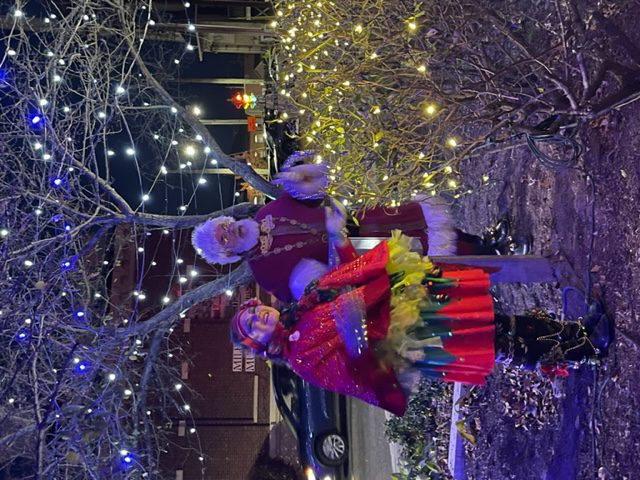With Santa’s arrival in downtown Milford on Saturday, children are starting to prepare their lists before visiting him in his house at 1 South Walnut Street in Milford. There are a few interesting facts about Santa that even some adults may not know and since Santa receives over 32,000 letters a day during the holiday season, he felt it might be fun to share some of those facts.
Children may ask why Santa lives in the North Pole. Interestingly, in the 1800s, there were a series of expeditions to the Arctic where the North Pole is located. Because it was such as mythical, magical place, Thomas Nast, a famous political cartoonist established it as Santa’s official residence in some of his illustrations.
Sometimes known as St. Nicholas or Kris Kringle, Santa Claus today is depicted as a jolly man in a red suit who delivers toys to children on Christmas Eve. However, the original Santa dates back to the 3rd century when Saint Nicholas, a monk, who is believed to have been born around 280 A.D. in Patara, which is present day Turkey. Legend has it that Saint Nicholas gave away his inherited wealth and traveled the countryside, aiding the poor and the sick. One story is that he saved three sisters from slavery by providing them with a dowry so that they could marry.
Over the years, St. Nicholas became known as the protector of children and sailors. He died on December 6, a day that is known as Feast Day and one that is considered lucky for large purchases or as a wedding day. One of the most popular saints during the Renaissance, his popularity continued even during the Protestant Reformation when adoration of saints was discouraged.
The legend arrived in America around 1773 when Dutch immigrants brought Sinter Klaas to New York. Several papers reported families gathering to celebrate the anniversary of his death. In 1804, woodcuts of Sinter Klaas by John Pintard, a member of the New York Historical Society, depicted today’s familiar Santa image. In 1809, Washington Irving referred to St. Nicholas as the “patron saint of New York” in his book “The History of New York.”
Santa’s look changed often over the years. At one point, he was depicted with a blue three-cornered hat, red waistcoat and yellow stockings, according to the History Channel. Later he was shown wearing a broad-brimmed hat with “huge Flemish trunk hose.”
Christmas faded somewhat as a holiday until the early 19th century. In 1820, stores began advertising Christmas shopping, focusing on children, and by 1840, a familiar looking version of Santa Claus emerged. The first “live” Santa was in Philadelphia, drawing huge crowds. As more stores realized the attraction of a live Santa, they began adding a place for children to visit Santa so they could give him their wish list.
Charity organizations also tapped into the popularity of Santa. In the 1890s. the Salvation Army was trying to raise funds for the free meals they provided at Christmas. They hired unemployed men to dress in the familiar red suit, sending them into the street to collect donations. This began the Salvation Army bell-ringing campaign that exists today.
Santa Claus exists around the world, although in different forms. In Switzerland and Germany, Christkind or Kris Kringle was believed to deliver gifts to “good boys and girls.” Christkind, which means “Christ Child,” appears as an angel-like figure and sometimes travels with St. Nicholas. A jolly elf named Jultomten delivers gifts in Scandinavia with goats pulling his sleigh. In England, Father Christmas fills stockings for the children while in France, Pere Noel fills their shoes. La Befana, a kindly witch, rides her broomstick down the chimney and delivers toys to stockings in Italy.
Share this Post



